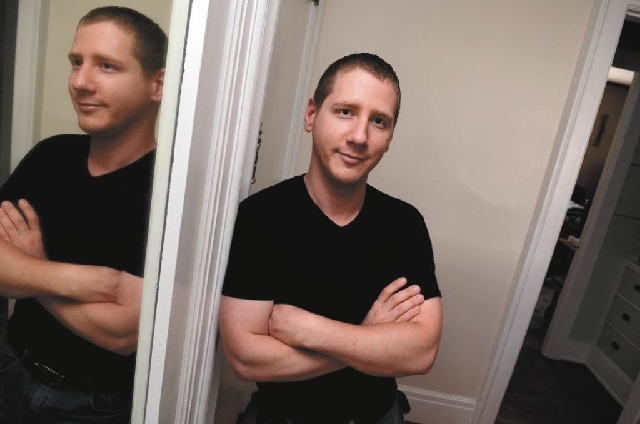Promise of price cut on hospital bills is in limbo

WASHINGTON — Huge list prices charged by hospitals are drawing increased attention, but a federal law meant to limit what the most financially vulnerable patients can be billed doesn’t seem to be making much difference.
A provision in President Barack Obama’s health care overhaul says most hospitals must charge uninsured patients no more than what people with health insurance are billed.
The goal is to protect patients from medical bankruptcy, a problem that will not go away next year when Obama’s law expands coverage for millions.
Because the Affordable Care Act doesn’t cover everyone, many people will remain uninsured. Also, some who could sign up are expected to procrastinate even though the law requires virtually everyone to have health insurance.
Consumer groups that lobbied for a “fair pricing” provision are disappointed. A university researcher who’s studied the issue says the government doesn’t seem to be doing much enforcement, and at least one state, Colorado, enacted a stricter rule since the federal statute passed.
Critics say the law has several problems:
—It applies only to nonprofit institutions, which means about 40 percent of all community hospitals are exempted. By comparison, the Colorado law also covers for-profit hospitals.
—It lacks a clear formula for hospitals to determine which uninsured patients qualify for financial aid, and how deep a discount is reasonable. A California law spells out such a formula for that state’s hospitals.
—More than three years after Obama signed his law, the Internal Revenue Service has not issued final rules explaining how hospitals should comply with the federal billing limits. Delay doesn’t signal a high priority.
“We still hear the same stories about patients who are being sent to (debt) collection,” said Jessica Curtis, director of the hospital accountability project at Community Catalyst, a Boston-based advocacy group that led the push for billing limitations. “It’s the same behavior that we were seeing before the passage of the Affordable Care Act.”
The Obama administration responds that fair pricing is the law of the land, and that hospitals are expected to comply even if the IRS has not finalized the rules. The agency has begun compliance reviews, a spokeswoman said.
The health law “helps to protect patients from hidden and high prices and unreasonable collection actions,” said Treasury Department spokeswoman Sabrina Siddiqui.
The American Hospital Association says it urges members to limit charges to the uninsured in line with the federal law. But neither the administration nor the industry has statistics on how many hospitals are doing so.
Health and Human Services Secretary Kathleen Sebelius recently took on hospital pricing policies when she released federal data that document wide disparities in what different hospitals charge for the same procedures.
Most patients never face those list prices because private insurers negotiate lower rates and government programs such as Medicare get to set what they will pay. The burden of paying list price falls on the uninsured and people with skimpy policies. It’s unclear that the federal requirements are helping at all.
Justin Farman, a nursing student from Watertown, in upstate New York, was diagnosed with a blood cancer last fall, when he was uninsured.
Going without health insurance is a calculated risk taken by many young people starting out their careers. Farman, 26, said the $120 his employer charged monthly for premiums was too much for his budget. Besides, he was in good shape and an avid weightlifter. But months of deep tiredness and unexplained weight loss led him to consult doctors, and he was eventually diagnosed with lymphoma.
Treatment at Upstate University Hospital in Syracuse was successful, but Farman faced more than $54,000 in medical bills, between the hospital and doctors.
“After I went into remission, the bills started to roll in,” said Farman. The hospital did not tell him that financial assistance might be available, Farman said.
He had to fend off collection agencies. “That’s not too fun,” he added.
A spokesman for Upstate said the federal fair pricing law does not appear to apply to the hospital because it is publicly owned and not incorporated as a nonprofit under federal law. Spokesman Darryl Geddes said he could not discuss individual cases, but the hospital does not decline care to anyone based on the individual’s ability to pay. Upstate maintains a financial assistance program that complies with state law, he added.
Part way through his treatment, Farman was able to get on Medicaid. With the help of a community agency, he also applied for assistance under New York law to help pay for his medical care during the period he was uninsured. On Friday, he received a letter saying his application had been approved and his debts would be greatly reduced.
Such discounts should be taken up front, advocates say.
Congress needs to take a second look at the federal law, says University of Southern California health policy professor Glenn Melnick.
As written, the law leaves it up to hospitals to determine which uninsured people qualify for discounted bills, and that could create a whole new set of disparities.
“One hospital could say it applies to people at 100 percent of the poverty line, and another could say 200 percent,” Melnick explained. He called the enforcement provisions were “very weak.”
A California law could serve as a model, he said. It defines the patients who qualify for assistance as those who are uninsured or making at or below 350 percent of the federal poverty line — $40,215 for an individual and $82,425 for a family of four. Those patients cannot be charged more than the hospital would receive from Medicare.
“This issue will not go away,” said Melnick. “Even when the (Affordable Care Act) is fully implemented, there will be millions and millions of people without insurance.”
———
Online:
Health care law: http://www.healthcare.gov
White House: http://www.whitehouse.gov/healthreform/healthcare-overview












